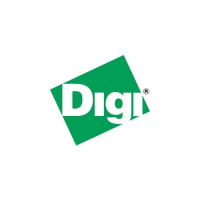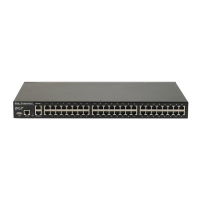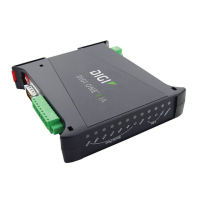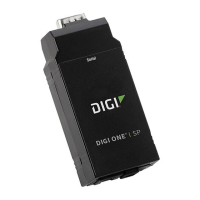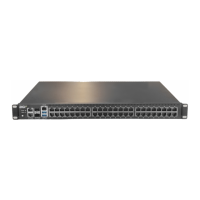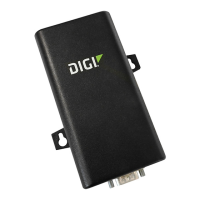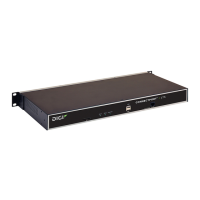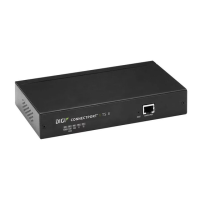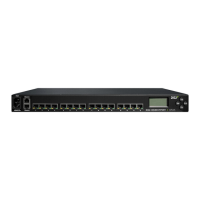90030500B Installation Page 49
The server can terminate the connection by dropping DTR, which PortServer II sees
as DCD going low. PortServer II then terminates the incoming connection. If the
incoming connection terminates itself, PortServer II lowers DTR. The server sees
DCD drop, and knows the connection is terminated. DTR remains low for two sec-
onds and input is flushed to assure a clean disconnection.
Termination control using DTR and DCD is the difference between
dev=host
and
dev=mout
(described later in this section). Both are used for outgoing connections.
host
requires that DCD is high before the connection is complete, while
mout
does
not.
Wiring required:
Full 10-wire Null Modem cable.
dev=hdial
Use this device type for connecting another computer to a serial port. DCD and DTR
must be cross-connected between PortServer II and the host. When the host raises
DTR, DCD goes high at PortServer II. When PortServer II receives data, a login is
spawned.
Unlike
dev=min
, there is no two-second delay before the login is spawned. When
PortServer II raises DTR, it brings DCD up at the host immediately.
When the user logs out or the host drops DTR, PortServer II lowers its DTR and
flushes data for two seconds.
dev=hio
Use this device type for connecting another computer to a serial port when you require
bidirectional incoming and outgoing connections. The device behaves like
dev=hdial
or
dev=host
.
When the host raises DTR (raising DCD on the PortServer II), an outgoing connection
can be established. Alternately, if data is received, a login is spawned.
dev=term
(Terminals)
Use this device type for “dumb” terminals. When the device is set for a terminal, the
incoming port ignores DCD. All outgoing connect attempts are refused.
Wiring required
: Only TD, RD, and GND connections are needed.
